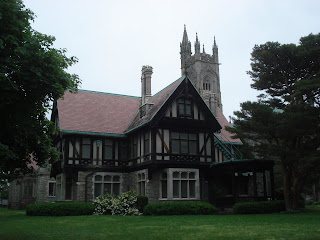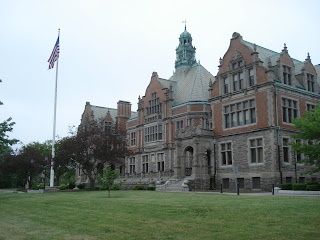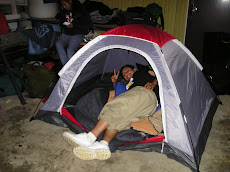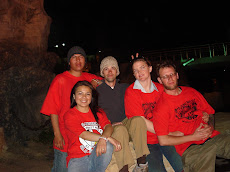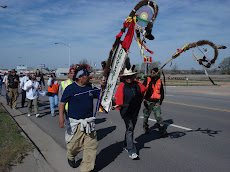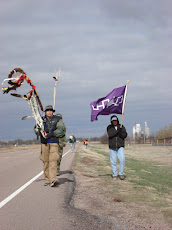WELCOME TO THE LONGEST WALK 2008 WEBSITE
This site is several week in the making so I would like to welcome you & thank you for visiting. This is the personal chronicling of the Longest Walk 2008 Northern Route by Chris Wintercount Teves. It has been hard to find the time to get this blog up and going but I hope that you will enjoy it. Many photographes and stories will be added in the coming weeks going as far back as Pueblo, Colorado. Please also visit the Offical Longest Walk Website and Brenda Norrell's Blogspot site for more information on the walk.
Monday, June 30, 2008
Friday, June 27, 2008
Java Junction Grand Opening June 28, 2008


Photos by: Chris Teves
Java Junction Cafe, Rossville, Pennsylvania
Please join us for the official grand opening festivities of Java Junction Cafe on June 28, between 10am & 3pm, where members of The Longest Walk 2 will be present to talk and answer questions.
The relaxing atmosphere of their sitting rooms is the perfect place to enjoy a cup of their great selection of coffees or enjoy an ice cream on their wrap-around porch. They also serve Panini sandwiches, salads, wraps, desserts, and various frozen drinks. Even if you are in a hurry, stop by to say hello.
Java Junction is located at 7501 Carlisle Road, at the intersection of Routes 74 and 177 in Rossville, PA. about 2 miles from Gifford Pinchot State Park. The cafe is open year around.
Please visit their website at: http://www.javajunction.us/
Hope to see you there!
Friday, June 20, 2008
Afternoon at Gettysburg - Day 88
Tuesday, June 17, 2008
Monday, June 16, 2008
Saturday, June 14, 2008
Bedford, Pennsylvania - Day 82
Friday, June 13, 2008
Mini Golf Championship - Day 81
Thursday, June 12, 2008
Behind The Name - Winter Counts

Counting by Winters
Winter counts are histories or calendars in which events are recorded by pictures, with one picture for each year. The Lakota call them waniyetu wowapi. Waniyetu is the word for year, which is measured from first snowfall to first snowfall. It is often translated as 'a winter.'
Wowapi means anything that is marked on a flat surface and can be read or counted, such as a book, a letter, or a drawing. Winter counts are physical records that were used in conjunction with a more extensive oral history. Each year was named for an event and the pictures referring to the year names served as a reference source that could be consulted regarding the order of the years. People knew the name of the year in which other important events occurred, and could place these in time by referring to the winter count. The events used to name the years were not necessarily the most important things that happened but ones that were memorable and widely known within the community. One of those events, The Year the Stars Fell, was also widely known to non-Lakota people.
Winter Count Keepers
Each Lakota band, or tiyospaye, had a designated winter count keeper who served as the community historian. The keeper was responsible for recounting the band's history at various events throughout the year and for adding a new image to the winter count each year. Events for which years were named were selected in consultation with a council of band elders. Traditionally only men served as winter count keepers, and the role often was passed down from one family member to another. In the 20th century some counts were passed on to women.
Winter counts were copied over many times as they wore out or required more space, or when a new keeper took over. While many counts clearly originated from a common source, recopying led to differences as well. A keeper might have chosen to record a different event, a different aspect of the same event, or might have made a mistake.
Pictures and Materials
For generations, Plains Indians drew pictures to document their experiences. The pictures on the Lakota winter counts were created to serve as mnemonic devices and are much simpler than ones they drew for other purposes. As some Lakota people learned to write their own language in the 19th century, a few keepers began to add written words to the pictures, and eventually some winter counts consisted entirely of written year names. The earliest winter counts were painted on hides. These records were transferred to muslin and paper once those materials became available. When an outside market developed for winter counts, Lakota people again painted copies of their counts on hides to satisfy the expectations of the curio trade. Pictorial art declined as a form of record keeping when literacy became widespread among the Lakota, although many people today see other types of recording — making marks through written words, art, video, and even online exhibits — as a modern continuation of the winter count tradition.
Winter counts are histories or calendars in which events are recorded by pictures, with one picture for each year. The Lakota call them waniyetu wowapi. Waniyetu is the word for year, which is measured from first snowfall to first snowfall. It is often translated as 'a winter.'
Wowapi means anything that is marked on a flat surface and can be read or counted, such as a book, a letter, or a drawing. Winter counts are physical records that were used in conjunction with a more extensive oral history. Each year was named for an event and the pictures referring to the year names served as a reference source that could be consulted regarding the order of the years. People knew the name of the year in which other important events occurred, and could place these in time by referring to the winter count. The events used to name the years were not necessarily the most important things that happened but ones that were memorable and widely known within the community. One of those events, The Year the Stars Fell, was also widely known to non-Lakota people.
Winter Count Keepers
Each Lakota band, or tiyospaye, had a designated winter count keeper who served as the community historian. The keeper was responsible for recounting the band's history at various events throughout the year and for adding a new image to the winter count each year. Events for which years were named were selected in consultation with a council of band elders. Traditionally only men served as winter count keepers, and the role often was passed down from one family member to another. In the 20th century some counts were passed on to women.
Winter counts were copied over many times as they wore out or required more space, or when a new keeper took over. While many counts clearly originated from a common source, recopying led to differences as well. A keeper might have chosen to record a different event, a different aspect of the same event, or might have made a mistake.
Pictures and Materials
For generations, Plains Indians drew pictures to document their experiences. The pictures on the Lakota winter counts were created to serve as mnemonic devices and are much simpler than ones they drew for other purposes. As some Lakota people learned to write their own language in the 19th century, a few keepers began to add written words to the pictures, and eventually some winter counts consisted entirely of written year names. The earliest winter counts were painted on hides. These records were transferred to muslin and paper once those materials became available. When an outside market developed for winter counts, Lakota people again painted copies of their counts on hides to satisfy the expectations of the curio trade. Pictorial art declined as a form of record keeping when literacy became widespread among the Lakota, although many people today see other types of recording — making marks through written words, art, video, and even online exhibits — as a modern continuation of the winter count tradition.
Sunday, June 8, 2008
Rhode Island Bound - Day 76
Saturday, June 7, 2008
Thursday, June 5, 2008
Fairhaven, Massachusetts - Day 73
Monday, June 2, 2008
Welcome to Ohio - Day 70

Photo by: Marie Littlemoon
Written by: Brenda Norrell
Luv the Mezenger taken into custody by Columbus, Ohio, police. Police attacked the Longest Walk Northern Route, as walkers walked the prayer near downtown Columbus. Police pointed a taser between the eyes of Michael Lane, Menominee, who arrived with his Maori wife and children from New Zealand. Longest Walk children were terrorized by Columbus police who threatened that the children would be taken into custody by social services. Luv was thrown to the ground handcuffed and taken into custody as Luv tried to distract police from tasering Michael. Luv was issued a summons, placed in the paddy wagon and then released. Luv and Long Walker Marie Littlemoon sustained minor injuries, cuts and brusies, from the police. Ohio police claimed that the walkers were a protest and denied it was a prayer walk.
Police Brutality in Columbus, Ohio - Day 70
Subscribe to:
Comments (Atom)




















